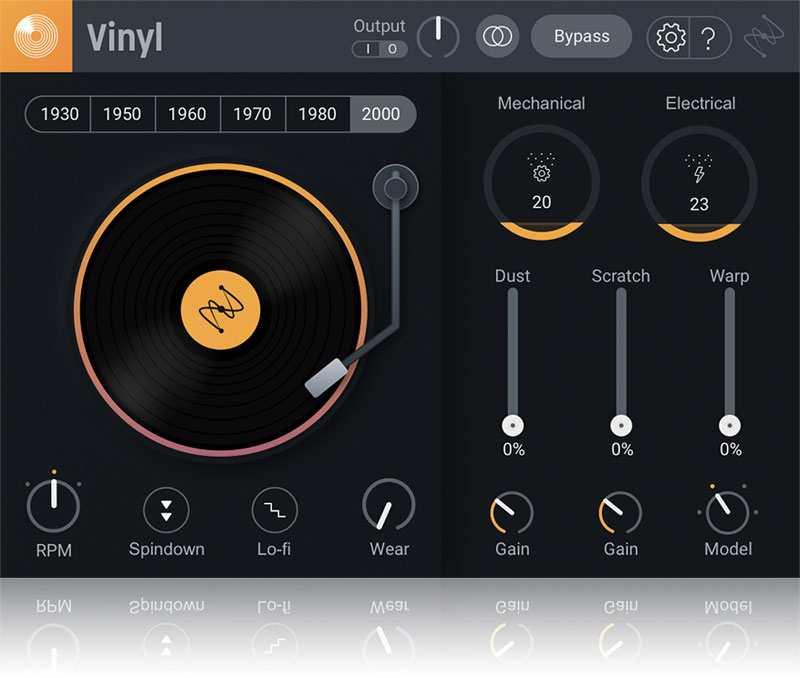You're currently on:
Vinyl
The return of the ultimate lo-fi weapon
Back just in time for its 15th anniversary, Vinyl is a plug-in that lets you simulate the dust, scratches, and warp of a worn record and the electrical and mechanical noise of the turntable it’s on. Give fresh recordings and instrument tracks the dirty, dusty feel of an earlier decade. Apply Vinyl to any source audio to make it sound as if it’s being played from a record and dial in exactly the right character to suit your tune. Plus, it’s now updated to 64-bit!
Key Features
Warp: Choose the amount of warping and the warp shape for the record—from no warp to totally melted and warped edges.Dust: Simulates the amount of dust that has settled on the surface of the record.
Year: Models record players from different decades using filter responses.
Wear: Simulates the effect of a record that's been played too many times, from brand new to a few thousand spins.
Mechanical Noise: Adds turntable rumble and motor noise.
Spin Down: Simulate the sound of slowly stopping playback of a record, modulating both playback speed and frequency.
Vinyl
What makes Vinyl unique?
Go beyond a straight emulation of the basic characteristics of aged vinyl for full customization of all of the artifacts of a vinyl listening experience. Dial in as much or as little of each of those elements as you need — add only an old hissy noise floor or just crackle, clicks, and pops. It’s up to you, and you get the flexibility with Vinyl’s digital emulation to introduce exactly the right combination.
Use Vinyl musically or as an effect
To get the full vinyl experience, add a little bit of each of the artifacts that give vinyl its characteristic sound. With Vinyl’s digital emulation of the real thing, you can dial in as much or as little as you want for a level of flexibility that’s impossible with hardware. Get an old radio sound that’s still musically accurate by adding hiss, crackle, and saturation without adding warble to it. Or, add just a warble effect without introducing a high noise floor. Vinyl allows you to be selective about what lo-fi elements you want to add to your mix.
The best lo-fi sound for any situation
The lo-fi sound of Vinyl can be used to create a section of your mix that sounds like it’s from a different era. It’s useful both in music production and in audio for film or television. Treat the audio for your picture to make it sound as if it’s coming from an authentic on screen old-fashioned source. In a musical context, use Vinyl to shape your mix, to create an effective counterpoint that plays against another huge or wide section of your arrangement.
“Vinyl has become the ultimate lo-fi tool for adding character to tracks. I’ve used it on projects for The Strokes, The Shins, My Morning Jacket, and Morrissey. I’ve used it on acoustic guitar, strings, and drums. My favorite is the year control — I loved dialing an orchestral string sound back to the 1930s.”
Joe Chiccarelli / Producer
The Strokes, The Killers, My Morning Jacket, Jason Mraz, Morrissey
System Requirements
Operating Systems:
Mac: macOS 10.13.6 High Sierra – macOS 11 Big Sur
PC: Win 8–Win 10
Plugin Formats:
AAX (64–bit), AU, VST2, VST3
Supported Hosts:
Logic Pro X, Live 9.7–10, Cubase 9.5–10.5, Pro Tools 12–2020, FL Studio 20, Studio One 5, REAPER 6, Reason 11, Bitwig Studio 3, Cakewalk by Bandlab, Digital Performer 10






